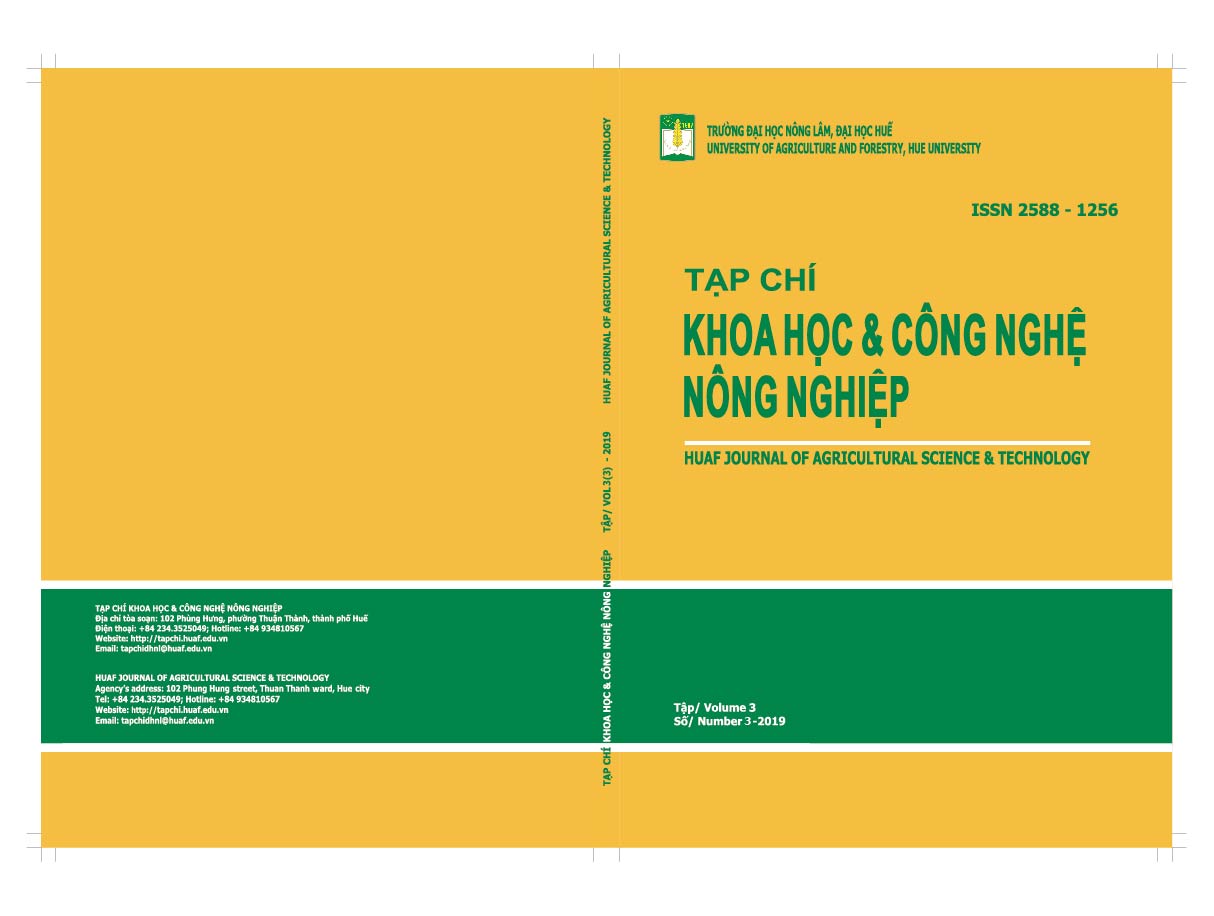##plugins.themes.huaf_theme.article.main##
Abstract
Nghiên cứu được thực hiện nhằm đánh giá ảnh hưởng của chế phẩm Supastock lên thành phần và mật độ thức ăn tự nhiên trong ao ương tôm thẻ chân trắng. Sáu ao nuôi được bố trí ngẫu nhiên vào 2 nghiệm thức: (A) bổ sung chế phẩm Supastock 2 ngày 1 lần và (B) đối chứng, không bổ sung. Ao được lót bạt và mỗi ao có diện tích 2.000 m2/ao, và mật độ nuôi là 500 con/m2. Mẫu định tính và định lượng động và thực vật phù du được thu 2 ngày/lần để xác định thành phần loài và mật độ. Kết quả thí nghiệm cho thấy, số loài và mật độ thực vật phù du ở 2 nghiệm thức không sai khác có ý nghĩa thống kê (p>0,05). Số loài thực vật phù du ở nghiệm thức A và B tương ứng 61 và 59; mật độ ở ngày thứ 12 sau khi thả tôm giống tương ứng là 385,00.104 tế bào/mL và 494,67.104 tế bào/mL. Trong khi đó, số loài động vật phù du không sai khác (p>0,05) nhưng mật độ động vật phù du ở nghiệm thức A cao hơn B có ý nghĩa thống kê (p<0,05). Số loài động vật phù du ở nghiệm thức A và B tương ứng 43 và 46; mật độ ở ngày thứ 8 sau khi thả tôm giống tương ứng 2.263 cá thể/mL và 530,0 cá thể/mL. Như vậy, bổ sung chế phẩm Supastock đã tăng mật độ thức ăn tự nhiên trong ao ương tôm post.
ABSTRACT
This study was conducted to evaluate the effects of Supastock application on composition of zooplanton and phyplanton and their densities in nursery ponds of white leg shrimp. Six ponds of 2,000 m2/pond were randomly allocated to two treatments: (A) in which ponds with Supastock application in two days interval and (B as control), ponds without applying Supastock. Post-larvae fries were stocked with density of 500 post-larvae/m2. Samples of phytoplankton and zooplankton were collected in 2 days per time in order to classify species and to measure their densities. The results showed that the composition and densities of phyplanton in A and B were not significant between treatments (p>0,05), 61 and 59 species, and the densities of phytoplankton in the twelfth day were recorded 385,000.104 cells/mL and 494,67.104 cells/mL, respectively. The species of zooplankton between two treatments were not significant different (p>0,05), but the densities of zooplankton were significantly different (p<0.05) among treatments. Zooplanton densities in (A) were higher than that in (B). During 8 days after stocking, zooplanton density in A was 2,263 ind./mL and in B is 530,0 ind,/mL. In conclusion, application of Supastock in nursery ponds of post-larvae shrimp improved density of livefood.

